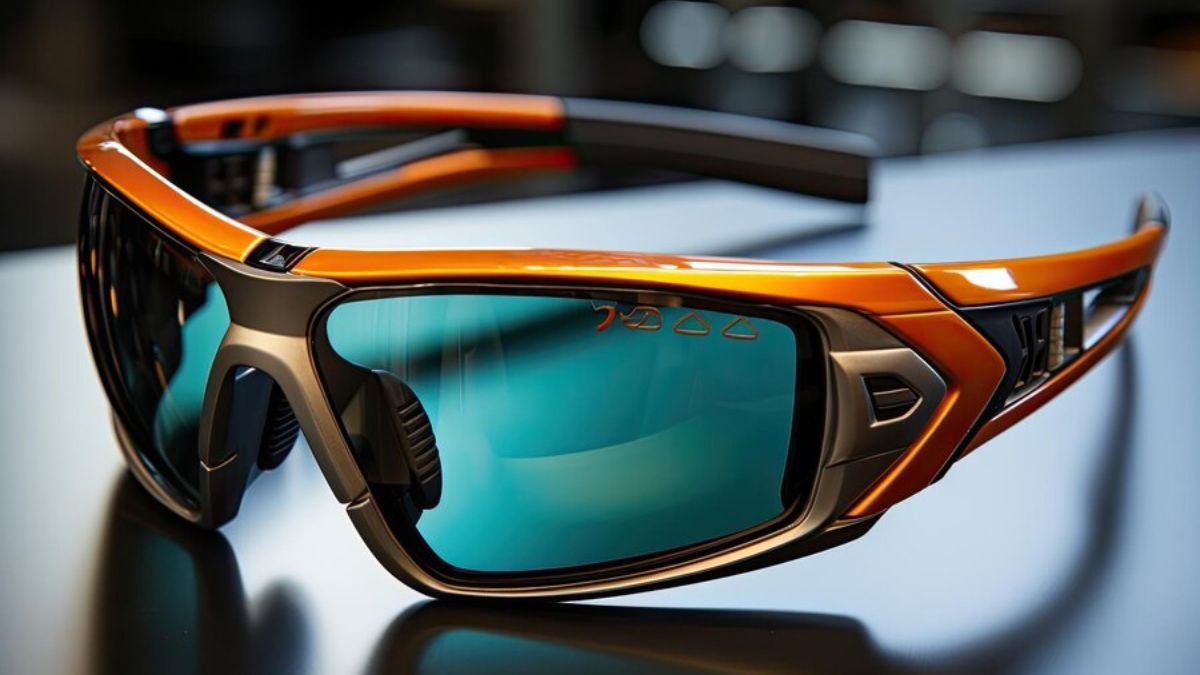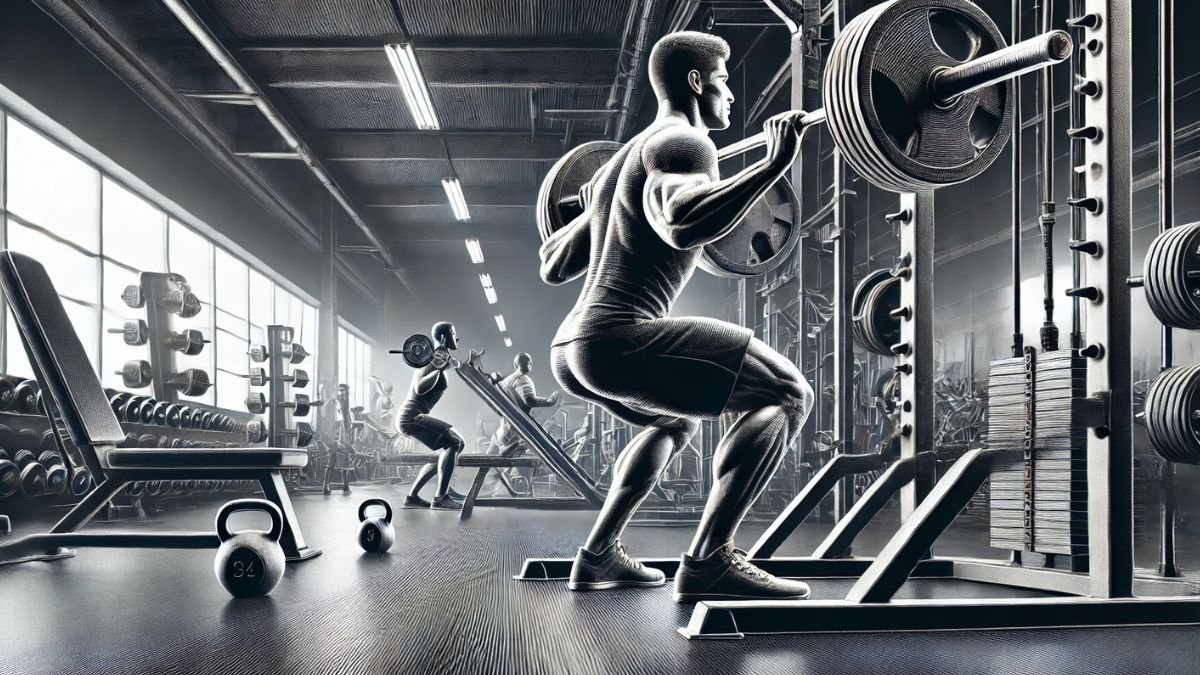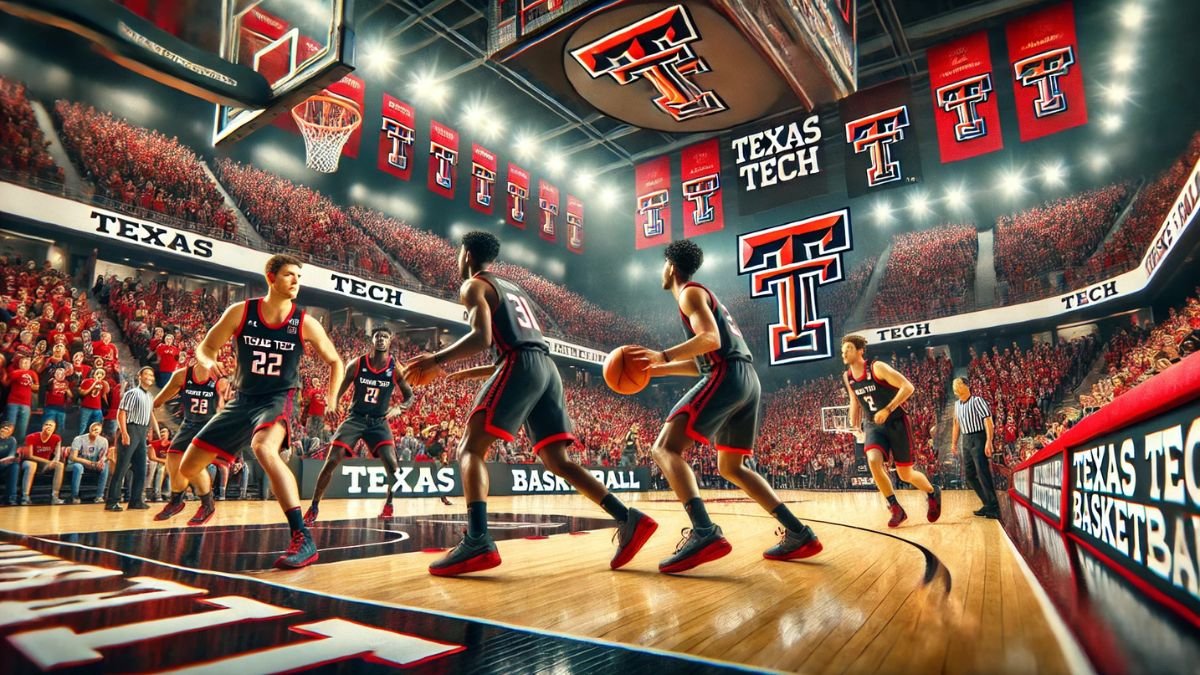SPORTS
The Ultimate Guide to Sports Glasses: Performance and Protection in Every Game

If you’re an athlete, you know that precision, speed, and protection are crucial in any sport. While most people think of gear like shoes, jerseys, or helmets, sports glasses are often overlooked. However, the right pair of sports glasses can enhance your performance, protect your eyes, and give you a competitive edge. Whether you’re playing basketball, cycling, or skiing, sports glasses are more than just a stylish accessory—they’re essential equipment for athletes at all levels.
In this blog post, we’ll explore everything you need to know about sports glasses, from the different types available to how they can improve your game. We’ll also compare our insights to those found on competitor websites, such as Daraz, CA Glasses, and Zenni Optical, and we’ll provide new information that you won’t find elsewhere.
Why Do Athletes Need Sports Glasses?
You might be wondering, “Why should I invest in sports glasses when I already have regular sunglasses or prescription lenses?” The answer lies in their design. Sports glasses are engineered to meet the specific needs of athletes. They offer:
Eye Protection: In fast-paced sports, flying balls, debris, or harsh weather conditions can be a threat to your eyes. Sports glasses provide a layer of protection against impact, wind, and UV rays.
Enhanced Vision: Whether you’re aiming for a basketball hoop, tracking a tennis ball, or focusing on the road ahead while cycling, sharp vision is key. Sports glasses often come with specialized lenses designed to enhance contrast and reduce glare, improving visual clarity.
Durability and Comfort: Sports glasses are made from materials that can withstand rough conditions and physical contact. They also feature designs that stay in place, even during intense physical activity.
Types of Sports Glasses
Sports glasses aren’t one-size-fits-all. Depending on your sport, you’ll need different features to optimize your performance. Let’s look at the main types of sports glasses available:
Prescription Sports Glasses
Athletes with vision impairments don’t have to sacrifice clarity for safety. Prescription sports glasses combine the vision correction of regular eyeglasses with the durability and protection of sports frames. These are ideal for sports like basketball, soccer, and racquetball, where both impact resistance and clear vision are critical.
Sunglasses for Outdoor Sports
If you’re into outdoor activities like cycling, running, or beach volleyball, a pair of sports sunglasses is essential. These glasses offer 100% UV protection and are designed to reduce glare, helping you maintain visibility in bright sunlight. Many sports sunglasses come with interchangeable lenses for different weather conditions.
Wraparound Sports Glasses
Wraparound styles are popular in high-speed sports like cycling, skiing, or motocross. These glasses provide peripheral protection and prevent wind, dust, and debris from entering your eyes. The curved design ensures that your vision is clear from all angles, while also staying securely in place.
Protective Eyewear for Contact Sports
For sports that involve heavy contact or flying objects, like baseball, basketball, or hockey, protective sports glasses or goggles are a must. They’re built with shatterproof polycarbonate lenses that provide maximum protection while maintaining clarity.
Key Features to Look for in Sports Glasses
When shopping for sports glasses, it’s important to consider more than just the look. Here are some essential features to keep in mind:
Impact Resistance
The primary purpose of sport glasses is to protect your eyes, so they need to be made from durable materials. Look for lenses made from polycarbonate, a shatter-resistant material that’s much tougher than regular plastic or glass.
UV Protection
Whether you’re outdoors or indoors, your sports glasses should offer 100% UV protection to shield your eyes from harmful rays, especially if you’re participating in outdoor sports like cycling or beach volleyball.
Anti-Fog Coating
Nothing is worse than your glasses fogging up in the middle of a game. Many sports glasses come with anti-fog coatings to prevent this from happening, ensuring that your vision remains clear even when you’re sweating or moving quickly between temperature zones.
Grip and Comfort
Sports glasses should stay in place, no matter how intense the action gets. Look for frames with rubberized grips on the nose and temple areas. Adjustable nose pads and lightweight materials will also make your glasses more comfortable for extended wear.
Interchangeable Lenses
If you play multiple sports or find yourself in different lighting conditions, interchangeable lenses are a great feature. You can switch between clear, tinted, or polarized lenses depending on the environment, ensuring you always have the right level of visibility.
Comparing SportsFanfare.com to Competitor Sites
To give you the best overview of sports glasses, let’s compare sport glasses content on our competitors’ websites with what we’ve covered here.
Daraz Sports Glasses
The Daraz website offers a range of men’s sports glasses, but the selection is limited, and the descriptions are vague. There’s no deep dive into the technical features or benefits, and the site doesn’t cater to specific sports. In contrast, this guide provides detailed information about different types of sports glasses, from prescription to protective eyewear, helping readers choose the right pair based on their sport.
CA Glasses
CA Glasses focuses on prescription sport glasses, which is great for athletes needing vision correction. However, they don’t explore non-prescription options or discuss features like UV protection or anti-fog coatings in detail. This blog offers a more comprehensive view, covering a wider range of sports glasses for all types of athletes, whether they need prescription lenses or not.
Zenni Optical Sport Glasses
Zenni Optical offers affordable sport glasses, but their product descriptions lack depth. The focus is primarily on price rather than performance features like impact resistance, grip, or lens options. In comparison, this post dives into the specific features that enhance performance and safety, ensuring readers get more than just a good deal—they get glasses that perform.
New Information Not Found on Competitors’ Sites
While competitors focus on basic features and pricing, we’re offering new insights that you won’t find elsewhere:
Blue Light Filtering in Sport Glasses
As more athletes are spending time both outdoors and in front of screens for virtual training, sports glasses with blue light filters are becoming more popular. These glasses can reduce eye strain and help improve focus during practice or while watching game footage, adding an extra layer of versatility.
Sustainable Sports Glasses
With the rise in eco-conscious consumerism, some brands are starting to offer sustainable sport glasses made from recycled materials. This is a growing trend not mentioned on competitor sites, but one worth considering for environmentally-minded athletes.
Smart Sports Glasses
The future of sport glasses is high-tech. Some companies are now offering smart sport glasses with built-in GPS, heart rate monitors, and performance tracking. While these are still in the early stages, they’re set to revolutionize how athletes track and improve their performance.
How to Choose the Right Pair of Sports Glasses
Picking the perfect pair of sport glasses isn’t just about aesthetics—it’s about finding the right balance between function, protection, and comfort. Here’s a step-by-step guide to help you make the best choice:
Identify Your Sport
Different sports require different features. For high-impact sports, look for protective goggles or impact-resistant frames. For outdoor sports, prioritize UV protection and anti-glare lenses.
Consider Your Vision Needs
Do you need prescription lenses? Make sure to choose sports glasses that can accommodate your prescription without sacrificing durability or protection.
Check the Fit
Your glasses should fit snugly but not be too tight. Look for adjustable frames or nose pads to get a custom fit.
Test for Comfort
If you can, try on a few pairs to see which one feels the most comfortable. The last thing you want is to be distracted by uncomfortable glasses during a game.
Conclusion
Sport glasses are an essential piece of equipment for athletes in almost every discipline. Whether you need vision correction, protection from UV rays, or impact resistance, sport glasses are designed to enhance your performance while keeping your eyes safe. By investing in the right pair, you’ll not only improve your game but also protect one of your most important assets—your vision.
Compared to competitors like Daraz, CA Glasses, and Zenni Optical, this post offers a more detailed, comprehensive guide to choosing the best sport glasses for your needs. From blue light filtering to smart glasses technology, we’ve covered all the new innovations and features that athletes need to know about. So, the next time you step onto the field or hit the court, you’ll be fully equipped to play at your best.
FAQs
What are the best sport glasses for high-impact sports?
Protective sport glasses with shatter-resistant polycarbonate lenses are ideal for high-impact sports like basketball or hockey.
Can I get prescription lenses in sport glasses?
Yes, many sport glasses can be fitted with prescription lenses, allowing athletes to enjoy clear vision while staying protected.
Do sport glasses block UV rays?
Most outdoor sport glasses offer 100% UV protection, which is essential for protecting your eyes from harmful sun exposure.
What’s the difference between sport sunglasses and regular sunglasses?
Sports sunglasses are designed with performance in mind. They offer better durability, grip, and often come with interchangeable lenses for different weather conditions.
Are there eco-friendly options for sports glasse?
Yes, some brands now offer sustainable sports glasse made from recycled materials, which is great for environmentally conscious athletes.
SPORTS
Pendulum Squat: The Ultimate Guide to Building Strong, Defined Legs

If you’re passionate about leg day or simply want to improve your lower body strength, the pendulum squat might just become your new best friend. Known for its targeted engagement of leg muscles without the strain on the lower back, the pendulum squat is an often-overlooked but powerful exercise. Whether you’re a gym newbie or a seasoned athlete, this exercise has something to offer everyone looking to build strength and definition in the lower body.
In this guide, we’ll cover everything you need to know about the pendulum squat, from its benefits and correct form to tips on getting the most out of this exercise. Let’s dive in and find out why this move is a must-have in your leg day routine.
What is a Pendulum Squat?
The pendulum squat is a type of squatting exercise performed on a specialized machine designed to give your leg muscles a serious workout. Unlike the traditional barbell squat, the pendulum squat machine stabilizes the movement, allowing you to focus more on muscle engagement rather than balance.
How the Pendulum Squat Machine Works
The machine uses a pivoting lever system that moves in a curved path—much like a pendulum—giving the exercise its name. This lever design creates constant tension on your quads, glutes, and hamstrings throughout the entire range of motion. You stand on a platform, position your shoulders under the pads, and squat down while following the arc of the machine.
This setup offers a controlled, smooth movement, making it easier to isolate your leg muscles and focus on form without putting excess strain on your back or knees.
Benefits of the Pendulum Squat
The pendulum squat isn’t just another leg exercise. Its design and motion offer unique benefits that make it a favorite for many gym-goers and athletes alike. Here’s why you might want to incorporate it into your workout routine:
Targeted Muscle Activation: The pendulum squat effectively targets the quadriceps, glutes, and hamstrings, allowing for a balanced lower body workout.
Reduced Lower Back Strain: Thanks to the machine’s stability, your lower back is less involved in supporting the weight, which minimizes strain.
Joint-Friendly Movement: The guided motion of the pendulum squat machine is easier on the knees and hips compared to traditional free-weight squats.
Improved Range of Motion: The machine encourages a deeper squat, which increases the range of motion and results in better muscle activation.
Ideal for Beginners and Experts: With the pendulum squat, beginners can learn proper squatting mechanics, and experienced lifters can maximize muscle tension without compromising form.
These benefits make the pendulum squat particularly effective for those recovering from injuries or anyone who wants to strengthen their legs without the potential drawbacks of other squat variations.
Pendulum Squat vs. Other Squat Variations
To understand the unique advantages of the pendulum squat, let’s compare it to other popular squatting exercises, such as the barbell squat and the hack squat.
Pendulum Squat vs. Barbell Squat
- Lower Back Load: In a barbell squat, your lower back has to support the weight, making it more challenging for those with back pain. The pendulum squat reduces this strain.
- Balance and Stability: Barbell squats require good balance and stability, whereas the pendulum squat allows you to focus purely on leg strength without worrying about balance.
- Isolation: The pendulum squat’s guided motion isolates the quads and glutes more effectively than a barbell squat, where stabilizing muscles are also heavily involved.
Step-by-Step Guide: How to Do the Pendulum Squat
To get the most out of the pendulum squat, it’s crucial to use the correct form. Here’s a step-by-step guide to help you perform it safely and effectively:
Set Up the Machine
- Adjust the shoulder pads to your height so that they rest comfortably on your shoulders.
- Place your feet on the platform, shoulder-width apart or slightly wider, depending on your preference.
Get Into Position
- Grip the handles on each side of the machine for support.
- Stand straight, with your core engaged and back flat against the machine’s backrest (if available).
Perform the Squat
- Slowly lower yourself down by bending your knees and keeping your core engaged.
- As you squat, follow the arc of the pendulum motion, going as low as comfortably possible to maximize the range of motion.
- Press back up through your heels to return to the starting position.
Focus on Form
- Keep your core tight throughout the movement to support your back.
- Avoid locking out your knees at the top of the squat; this keeps tension on your muscles.
Common Mistakes to Avoid
While the pendulum squat is generally safe, there are a few mistakes to watch out for to get the best results and avoid injury:
Rushing the Movement: Slow, controlled movements are essential. Rushing can reduce effectiveness and increase injury risk.
Letting Knees Cave Inward: Keep your knees in line with your toes to protect your joints and prevent injury.
Using Too Much Weight: Start with a manageable weight. Too much weight can compromise your formand diminish the exercise’s benefits.
Not Going Deep Enough: The pendulum squat allows for a deep squat, which is key to targeting your muscles fully. Try to squat low without losing form.
By avoiding these common mistakes, you’ll be able to perform the pendulum squat safely and effectively.
Tips to Maximize Your Pendulum Squat Workout
To get the most out of this powerful exercise, consider these helpful tips:
Warm Up First: Warming up with dynamic leg stretches or light cardio prepares your muscles for an intense workout.
Focus on Breathing: Inhale as you lower into the squat and exhale as you press back up. Good breathing helps maintain core stability.
Progress Slowly: Increase weight gradually as you build strength and confidence in your form.
Incorporate Tempo Variations: Try slower descents or holds at the bottom to increase muscle tension and challenge yourself further.
Add It to a Leg Day Superset: Pair the pendulum squat with exercises like lunges or leg presses for an extra burn and a balanced leg workout.
Using these tips can help you see faster and more effective results in your strength and muscle-building goals.
Is the Pendulum Squat Right for You?
The pendulum squat is a great choice for people looking to build strong, defined legs without putting undue strain on their lower back or joints. It’s particularly beneficial for:
- Beginners: Those new to squats can learn proper mechanics in a safe and controlled way.
- Lifters with Back Issues: If back pain is an issue, the pendulum squat’s design minimizes lower back involvement.
- Advanced Lifters: Experienced athletes can use the pendulums squat to achieve maximum muscle activation and build their quads and glutes.
Whether you’re just starting out or looking to shake up your leg routine, the pendulums squat is an effective and safe option.
Conclusion:
The pendulums squat is a powerful tool for anyone looking to strengthen their lower body. With benefits like reduced lower back strain, increased muscle activation, and joint-friendly mechanics, it’s easy to see why this exercise is gaining popularity.
So, whether you’re an athlete, a beginner, or someone recovering from an injury, the pendulums squat might be the missing piece in your fitness puzzle. Give it a try, and watch your leg day gains soar to new heights!
FAQs
Q: Can I do pendulum squats if I have knee pain?
A: Yes, the pendulums squat is generally easier on the knees than traditional squats. However, if you have knee issues, start with a light weight and consult a healthcare professional if you experience discomfort.
Q: How often should I do pendulum squats?
A: Incorporate them into your leg day routine once or twice a week. Remember to balance with other leg exercises for comprehensive muscle development.
Q: Is the pendulums squat effective for glute activation?
A: Absolutely! The pendulums squat targets not only the quads but also the glutes and hamstrings, making it a great addition to a lower-body workout.
SPORTS
Texas Tech Basketball A Deep Dive into the Red Raiders’ Success and Exciting Future

Texas Tech Basketball has steadily built a reputation for toughness, grit, and an electrifying style of play that has captivated fans across the country. Known for their intense defense and fierce competitiveness, the Texas Tech Red Raiders have become one of the most respected teams in college basketball. From the program’s strong historical roots to recent thrilling performances in the NCAA tournament, Texas Tech Basketball has carved out a spot among the elite college basketball programs in the nation. texas tech basketball
A Brief History of Texas Tech Basketball
Texas Tech Basketball was founded in 1925, shortly after the university opened its doors in Lubbock, Texas. Since then, the program has grown in stature and respect, consistently competing at high levels in various conferences before joining the Big 12 Conference in 1996. The Red Raiders’ home court, the United Supermarkets Arena, has become a fortress for the team and a venue where fans from all over Texas come to cheer on their team.
Rise to National Prominence
By 2019, they were a force to be reckoned with, reaching the NCAA Championship Game and making their first Final Four appearance in program history. This achievement underlined the team’s growth and resilience and marked Texas Tech as a serious contender in college basketball.
Defining Characteristics of Texas Tech Basketball
texas tech basketball style of play is rooted in defense and team cohesion. They’ve gained a reputation as a team that plays with high intensity, placing them among the most difficult teams to score against. Here are some key traits that define Texas Tech Basketball:
Relentless Defense: Known for their stifling defense, Texas Tech consistently ranks among the top defensive teams in the country. They excel at forcing turnovers, limiting opponents’ scoring opportunities, and frustrating offenses.
Team-Oriented Play: Texas Tech Basketball emphasizes teamwork over individual glory.
High-Energy Style: The Red Raiders’ fast pace and high-energy play make them a fun team to watch, as they push the tempo and maintain pressure on both offense and defense.
Notable Achievements in Texas Tech Basketball History
Texas Tech has had several memorable seasons, with some standout moments that have defined the program. Here are a few of the most significant achievements:
Multiple NCAA Tournament Appearances
Since the 1950s, texas tech basketball has made regular appearances in the NCAA tournament, building a legacy of consistency. In recent years, they’ve established themselves as a tournament mainstay, with frequent appearances in the Sweet Sixteen and Elite Eight. Their track record in the NCAA tournament reflects their ability to stay competitive year after year.
Influential Figures in Texas Tech Basketball
Several key figures have left a lasting impact on Texas Tech Basketballs, from standout players to visionary coaches. Here’s a look at some of the people who have shaped the program’s success.
Chris Beard – The Architect of Modern Success
Chris Beard served as the head coach from 2016 to 2021 and is widely credited with taking Texas Tech Basketballs to new heights. His coaching style, which emphasized discipline, defense, and teamwork, aligned perfectly with the team’s values. Beard’s leadership helped the team reach the 2019 NCAA Championship Game, marking one of the program’s proudest moments.
Jarrett Culver – The Star of the 2019 Season
Jarrett Culver, a Lubbock native, became a household name during texas tech basketballs 2019 NCAA tournament run. His standout performances and leadership on the court were instrumental in taking the Red Raiders to the championship game. Culver’s success at Texas Tech also helped him secure a top pick in the NBA Draft, cementing his legacy in the program.
Current Head Coach Mark Adams
Taking over the reins after Beard’s departure, Coach Mark Adams has continued the tradition of defensive excellence at Texas Tech.
The Red Raiders’ Fan Culture
Texas Tech fans are some of the most passionate and dedicated in college sports. Known for their vocal support and unwavering loyalty, they bring energy and excitement to every game. Texas Tech’s student section, known as the Raider Riot, is legendary for its enthusiasm. The fans’ enthusiasm helps fuel the team’s high-energy style, creating a home-court advantage that gives the Red Raiders an edge.
The Future of Texas Tech Basketball
With a strong foundation, a roster of talented players, and the leadership of Coach Mark Adams, the future looks bright for Texas Tech Basketballs.
Player Development and Recruiting
The team’s scouting and development efforts have brought in key players who buy into the Red Raiders’ culture, helping the team remain a consistent contender.
Continued Success in the Big 12
In the challenging Big 12 Conference, Texas Tech is poised to remain a strong force. The Big 12 prepares Texas Tech well for the NCAA tournament, giving them experience against top competition.
How to Watch Texas Tech Basketball
For fans interested in following the Red Raiders, there are plenty of ways to keep up with the action:
Attend Games: Catch a game live at the United Supermarkets Arena in Lubbock, Texas, for the full experience.
Social Media: Follow Texas Tech Basketball’s official social media accounts for game updates, behind-the-scenes content, and player highlights.
Why Texas Tech Basketball Stands Out
Texas Tech Basketballs has built a unique identity in college basketballs, driven by strong team values and fan support. Here’s why the Red Raiders stand out:
Exceptional Defense: Texas Tech’s intense defensive strategy consistently ranks among the best in the nation.
Resilient Team Spirit: The players’ commitment to teamwork and unselfish play style sets Texas Tech apart from more star-driven teams.
Conclusion:
Texas Tech Basketballs is more than just a team—it’s a program rich with tradition, fueled by a passionate fan base, and driven by a commitment to excellence. The Red Raiders’ rise to prominence, particularly in recent years, is a testament to the hard work of players, coaches, and fans alike. Whether you’re a dedicated fan or a newcomer to college hoops, Texas Tech Basketballs offers an exciting journey worth following.
FAQs
Who is Texas Tech’s biggest rival in basketball?
- Texas Tech’s biggest basketball rivals are often Big 12 teams like Texas, Baylor, and Kansas. These matchups bring intense competition and are highly anticipated each season.
Where does Texas Tech Basketball play home games?
- Texas Tech plays its home games at the United Supermarkets Arena in Lubbock, Texas, a venue known for its energetic atmosphere.
How can I buy tickets to Texas Tech Basketball games?
- Tickets can be purchased through the official Texas Tech Athletics website, at the arena box office, or from authorized resale platforms.
Has Texas Techs ever won an NCAA Basketball Championship?
- No, Texas Tech has yet to win an NCAA Championship, but they came very close in 2019, making it to the finals and losing to Virginia in an intense overtime game.
SPORTS
A Complete Guide to the Euro Bracket

Football fans across Europe and beyond eagerly await the UEFA European Championship (commonly known as the Euros), and at the heart of the tournament’s excitement lies the Euro bracket. If you’ve ever wondered how teams navigate this intense knockout stage, you’re in the right place. Whether you’re new to the Euros or just need a refresher, this post will walk you through the structure of the Euro bracket, how it works, and why it’s so significant.
This guide will be more in-depth and helpful than the available resources, providing valuable insights and new details that go beyond what you’ll find on other blogs. Let’s dive into what makes the Euro bracket so special, and why understanding it is key to following the tournament closely.
What Is a Euro Bracket?
The Euro bracket refers to the knockout stage in the UEFA European Championship. It starts after the group stage, where the top teams from each group advance. This bracket is essentially a structured chart or “tree” that shows which teams will face off in each round until only two remain for the final.
Unlike the group stage, where teams can afford to lose or draw a match and still progress, the Euro bracket follows a single-elimination format. That means each match is do-or-die—one loss, and you’re out. The winner moves on, and the defeated team goes home.
How Does the Euro Bracket Work?
The Euro bracket begins with the Round of 16, which is the first knockout round. From there, it proceeds through the Quarterfinals, Semifinals, and finally, the Final. Here’s how the process works in detail:
Group Stage Leads to the Knockout Rounds
The tournament starts with a group stage where teams are divided into groups (usually six groups of four). The top two teams from each group, along with the four best third-place teams, move on to the knockout rounds. These 16 teams make up the starting bracket.
Single-Elimination Format
Once teams enter the knockout rounds, it’s win or go home. Matches are 90 minutes, but if the game ends in a draw, it goes into extra time (two 15-minute halves) and, if necessary, a penalty shootout to determine the winner.
The Bracket Progression
- Round of 16: The 16 qualified teams are paired up based on their group stage performance. Higher-ranked teams usually face lower-ranked teams.
- Quarterfinals: The eight winning teams from the Round of 16 advance.
- Semifinals: The final four teams face off.
- Final: The two remaining teams compete for the championship.
Why Is the Euro Bracket So Important?
The Euro bracket is where the real magic happens. After the group stages, all eyes turn to the knockout rounds because they are the most intense and dramatic part of the tournament. Teams that may have struggled in the group stage often shine in the knockout rounds, making it an unpredictable and thrilling competition.
For fans, the bracket is easy to follow. Each match shows a clear path toward the final, and as the tournament progresses, it becomes easier to predict potential outcomes and dream matchups.
Comparing the Euro Bracket to Other Tournaments
The structure of the Euro bracket is similar to that of other major international football tournaments like the FIFA World Cup or the Copa America. However, there are a few distinct features:
Smaller Scale: The Euros have fewer teams than the World Cup, making the competition slightly more concentrated and arguably more intense.
Higher Level of Competition: Since all participating teams come from Europe, where football talent is particularly strong, every match in the knockout rounds can feel like a final. This is different from global tournaments where there might be a greater range in team quality.
Euro Bracket Strategy: How Teams Approach It
Strategizing for the Euro bracket involves more than just having a strong squad. It’s about managing resources, dealing with pressure, and sometimes even relying on luck. Here are some key strategies teams use in the knockout rounds:
Rotating Players
Coaches often rotate players during the group stage to keep their best players fresh for the knockout rounds. Teams that are guaranteed a spot in the knockout rounds might rest star players in the final group stage match.
Defensive Tactics
In the knockout rounds, teams tend to play more defensively since there’s no room for error. A single mistake could mean elimination. Some teams will even play for a draw and focus on winning in extra time or on penalties, particularly if they’re up against a stronger opponent.
Targeting Penalty Shootouts
While penalty shootouts are high-stress situations, some teams actively prepare for them. Teams with skilled goalkeepers or composed penalty takers may feel more confident about taking a game to penalties rather than risking a loss in regular time.
How the Euro Bracket Affects Fan Engagement
The Euro bracket structure plays a huge role in fan excitement and engagement. Once teams reach the knockout stage, the stakes are at their highest, and every game becomes a must-watch event. Fans often create their own bracket predictions, similar to what you’d see with American sports like the NCAA basketball tournament.
This involvement creates a sense of competition among fans as they try to predict which teams will go all the way. The bracket system also helps build anticipation for certain matchups, especially when two strong teams seem likely to meet in a later round.
Euro Bracket in 2024: What to Expect
Looking ahead to Euro 2024, the bracket promises to be as thrilling as ever. With powerhouse teams like France, Germany, Spain, and Italy all likely to qualify, the knockout rounds could feature some intense battles.
Potential Dark Horses
Every Euro tournament has its dark horses—teams that surprise everyone by making a deep run. In Euro 2016, for example, Iceland shocked the world by reaching the quarterfinals. Fans should keep an eye on teams like Denmark and Switzerland, which could be poised to upset the bigger teams in the knockout rounds.
Conclusion
Understanding the Euro bracket is key to enjoying the UEFA European Championship. From the tension of knockout games to the drama of penalty shootouts, the bracket system provides the structure for some of the most memorable moments in football. As Euro 2024 approaches, fans should prepare for another tournament full of surprises, thrilling games, and unforgettable performances.
Now that you’re familiar with how the Euro bracket works, you can follow along with the action and maybe even make a few predictions of your own. With all the excitement around Euro 2024, one thing’s for sure: the knockout rounds will deliver high drama and football at its finest.
(FAQs)
How does a team qualify for the Euro bracket?
Teams qualify for the Euro bracket by finishing in the top two of their group during the group stage or being one of the four best third-place teams.
What happens if a match in the Euro bracket ends in a draw?
If a match ends in a draw after 90 minutes, it goes into extra time (two 15-minute halves). If it’s still tied, a penalty shootout determines the winner.
How many teams make it to the Euro bracket?
A total of 16 teams make it to the Euro bracket after the group stage.
Why is the Euro bracket so important?
The Euro brackets is crucial because it represents the final stages of the tournament, where every match is an elimination game. It’s where champions are made.
How often do penalties decide Euro bracket matches?
Penalty shootouts are fairly common in knockout rounds, especially in tightly contested matches where teams are evenly matched.
-

 BLOG2 months ago
BLOG2 months agoA Complete Guide to Money6x.com Earning How to Earn Money Online Easily
-

 BLOG2 months ago
BLOG2 months agoThe Ultimate Guide to editorial.htb: A Complete Walkthrough for Beginners
-

 BUSINESS1 month ago
BUSINESS1 month agoThe Benefits of Using MCRA Business Cards
-

 GENERAL2 months ago
GENERAL2 months agoStars-923 Unveiling the Mysteries of a Unique Celestial Phenomenon
-

 TOPIC1 month ago
TOPIC1 month agoIntroduction: What is the //vital-mag.net Blog?
-

 BUSINESS2 months ago
BUSINESS2 months agoBold2FA: The Game-Changer in Online Security You Need to Know About
-

 INSURENCE2 months ago
INSURENCE2 months agoTraceloans Your Complete Guide to Finding the Perfect Loan
-

 GENERAL2 months ago
GENERAL2 months agoAluminum Joists: The Future of Durable and Sustainable Decking












